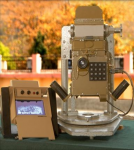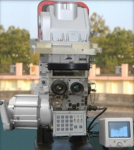Indian Army tanks now have sharper night vision equipment developed by DRDO
New Delhi: The Defence Research and Development Organisation (DRDO) has indigenously developed Thermal Imaging and Day Sight equipment to arm the tanks in Indian Army’s inventory with a sharper night vision, ThePrint has learnt.
The night vision equipment, to be installed in the T-72 and T-90 tanks, is meant for a clearer night vision even in pitch darkness. It will have a higher range of sight as compared to the existing technology, said a DRDO official.
It can be used for both day and night operations, and also boasts of superior image processing features at any given time of the day. Further, it will serve the same purpose on both varieties of tanks, only the mechanics would be different, added the official who didn’t wish to be named.
Out of an order of about 1,000 units of the night vision equipment for the T-72 tanks, nearly 300 have already been delivered to the Army, said the official. For these tanks, the equipment will have a 3-km range for tank targets.
The night vision equipment being developed for the T-90 tanks will have a range of around 4 km and will help in “battlefield surveillance, acquisition and firing on targets” and provide a “hunter-killer” capability to tank commander, said the DRDO official.
The equipment units for the T-90 tanks are yet to be delivered.
The night vision equipment has been developed by DRDO’s Instruments Research and Development Establishment, and is being jointly produced by Bharat Electronics Limited, Machilipatnam, and Ordnance Factory, Dehradun.
Upgraded technology
The DRDO official told ThePrint, “So far, image intensive tubes were used for night sight in the tanks which had a range of 150-200 metres and also required some amount of light to process a clear image. This was an old technology. Now, it will be replaced with the new equipment developed by us.”
There are over 5,000 tanks in the Indian Army’s inventory.
A senior Army officer told ThePrint that the latest equipment will provide better vision at night as it is a technology upgrade for the tanks over the existing one.
“The project started around 2011-2012 and it has been a collaborative effort between the DRDO and the Army.
“The equipment is working well for the T-72 tanks, but there have been some issues with the ones for T-90 tanks. We are working on it and hopefully they should be sorted out soon,” said the officer, who did not want to be named.









